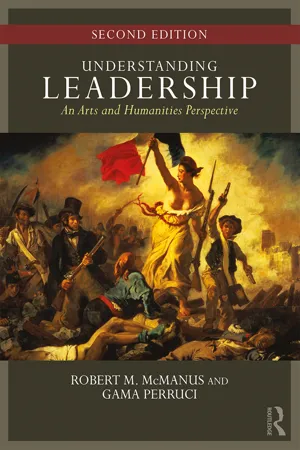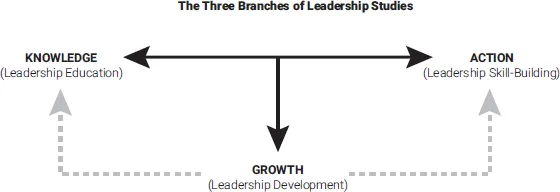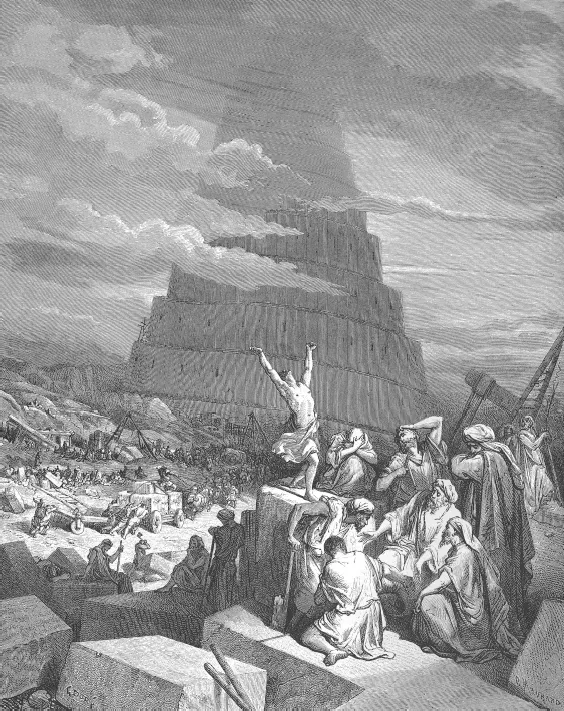Part I
How to think about leadership
Leadership, as a field of study, has expanded dramatically in recent years as more organizations (higher education institutions, businesses, nonprofits, and even the public sector) have recognized the importance of leadership development in the twenty-first century. We are clamoring for more (and better) leaders who are capable of leading our societies in more effective ways. As challenges become more complex, and solutions seem more elusive, we call on more wise leaders to step up. But how do we develop those leaders? Where do they come from?
They come from societies that promote, first and foremost, a deeper understanding of leadership. In this section, we review the intellectual history of the field and then introduce a simple definition of leadership, which is centered on five components – leaders, followers, goals, context, and cultural norms. This definition will guide our journey through this book.
Part I is dedicated to the first four components of our definition – leaders, followers, goals, and context. These are the building blocks of leadership. By investigating each component through separate chapters, you will be able to analyze their individual peculiarities. We saved the fifth component for Part II since the world offers a wide variety of cultures; therefore, it deserves more extensive treatment. Part III shifts our focus from the study of leadership to its practice. It will be your opportunity to connect the dots and see how the five components work together in an applied context.
Leadership, as a field of study, has three “branches” – leadership education, leadership training, and leadership development. In the 1980s, as the proliferation of leadership programs took place in American and European universities, Dennis Roberts provided a pioneering framework for the field.1 He acknowledged the importance of skill building (leadership training), but also highlighted the need for providing emerging leaders with an understanding of leadership concepts (leadership education). The combination of the two (education and skill building) contributes to “leadership development.”
Some leadership programs emphasize the curricular side of leadership studies, offering classroom-based courses that stress different aspects of leadership – for example, organizational leadership, leading change, and global leadership. These courses cover the knowledge side of the field. We see very few practitioners seeking a leadership program for the sake of learning about different theories and models. From that standpoint, leadership studies is dissimilar to fields such as political science. Many students take courses from the latter because they enjoy the subject in its own right – as an intellectual exercise in expanding their knowledge of politics, and not because they want to become better politicians. Leadership studies students may find more affinity with those from psychology, for example, who, aside from enjoying the intellectual field, also see direct application to their professional plans and personal lives.
Figure P1.1The three branches of leadership
Most practitioners participate in leadership programs because they want to become better leaders, often defined as someone who possesses strong leadership skills. Most leadership programs are based on the co-curricular side – the ability of aspiring leaders to expand their leadership skills through hands-on activities. These programs emphasize the action component of leadership studies with a stress on specific skills, such as facilitation, decision making, teamwork, and conflict resolution.
Leadership programs in both higher education and organizations (business and nonprofit) organize a variety of activities, such as workshops and day-long challenge courses, in order to offer aspiring leaders an opportunity to practice their leadership skills. As the global marketplace has become fiercely competitive, these skills are prized additions to an aspiring leader’s résumé and professional development.
A growing trend in leadership studies programs is to offer a comprehensive combination of knowledge (leadership education) and action (leadership training) because the two together lead to growth (leadership development). Simply offering a “toolbox” (leadership training) is not enough. We must also engage our aspiring leaders in critical thinking and deep analytical thought processes that take place on the knowledge side. Leadership development is the product of putting knowledge to the test through action. It takes us beyond the intellectual mastery of theories and models and connects knowledge to experience.
In non-Western societies, this combination is often referred to as wisdom. Prasad Kaipa and Navi Radjou argue that we limit ourselves when we focus only on developing smart leaders.2 Instead, they argue for a change in our mindset – moving from smart to wise leaders. Wisdom leadership calls for noble purpose, role clarity, discernment, flexible fortitude, and enlightened self-interest.
Leaders, therefore, cannot simply seek to develop their leadership skills without understanding first the theories and models that explain (and guide) leadership development. Sometimes, emerging leaders are eager to start “doing leadership” in the same way novice piano players might want to sit down and bang on the keyboard in order to master their musical skills. Piano teachers actually discourage too much playing before the fundamentals are fully understood at the theoretical level; otherwise, the novice piano players may pick up bad habits that will be difficult to shake along the road.
And so it is with leadership development. As John W. Gardner argued in his classic, On Leadership, “The first step is not action; the first step is understanding. The first question is how to think about leadership.”3 Part I, therefore, serves as your first steps into your deeper understanding of how leadership works.
Notes
1 Understanding leadership
The first step is not action; the first step is understanding. The first question is how to think about leadership.
John W. Gardner1
Any individual who aspires to become better at an endeavor must first acquire a certain level of knowledge related to it. While we may be eager to move into action, the first step – as the chapter epigraph reminds us – should be understanding. This chapter is designed to lay the groundwork as you seek to gain a deeper appreciation for how leadership works.
Leadership seems to apply to so many facets of life that we are left with the sense that it is impossible to put our intellectual arms around it. Philosophers and practitioners have debated the nature of leadership for millennia. As an intellectual concept, leadership is so expansive that in order to create meaningful insights about it, we have to take on an interdisciplinary approach, borrowing languages from many different disciplines. While many scholars view this as positive, others decry the inability of the field to coalesce.2 We have witnessed in recent decades what Barbara Kellerman as dubbed the rise of a “leadership industry,” with consultants, coaches, and “experts” selling their own versions of what leadership means.3 We are all speaking different languages while claiming to be capturing the essence of leadership. In the process, we are left with a cacophony of languages – a true Tower of Babel.
The tower metaphor can help us understand the real challenges that leaders face when seeking intellectual guidance from the leadership studies’ literature. As the story goes in the book of Genesis, King Nimrod initiated a project to build a tower by the banks of the Euphrates River, in what became Babylon in the ancient world (present-day Iraq). This massive and ambitious tower was supposed to be so tall that it would reach to the heavens. Alarmed by the effectiveness of the project, God intervened. His strategy was simple – mix up the languages so the tower builders could not effectively communicate. Once communication broke down, the project came to a halt. Simple, yet brilliant! The fastest way to undermine a project is to take away the participants’ ability to communicate with one another (see Figure 1.1).
There is a leadership lesson in this story – achievement has as its foundation the use of a common means of communication. A cursory look at recent leadership book titles suggests a wide variety of approaches, theories, and models. The studies of leadership are rich in allusions to other disciplines – psychology, political science, economics, sociology, even biology, to name but a few. We praise the interdisciplinary nature of leadership studies as a source of intellectual strength in the field. The drawback, however, is that we have collected many bricks for this construction project, but they seem scattered around the worksite, and no one seems to know how to bring them together under a single architectural plan in order to build the tower. There are so many different “models” of leadership that a tower builder would be perplexed at the idea that they are supposed to all converge together and form an elegant structure.
Figure 1.1Gustave Doré (1832–1883), The Confusion of the Tongues, 1897
The first order of business in a book that seeks to elucidate our understanding of leadership is to simplify language. Rather than offering a complex theory that only a few practitioners will find useful – thus becoming yet another “brick” in this tower – we propose a simple architectural design to which bricks can be added. This book offers a sketch of a language – what we refer to as the Five Components of Leadership Model – to be used in building our leadership tower.4 The project is not so ambitious as to offer a definitive general theory of leadership. Instead, we offer a simple structure that will help emerging leaders make sense of leadership in the twenty-first century.
Our approach to understanding leadership
Throughout this book, we will explore the five components of leadership by introducing works from the arts and humanities. Our artifacts for study are artistic in nature, such as novels, paintings, and music. This research method is broadly referred to as “textual analysis.” The term “text,” as used here, simply means any sort of artifact that is created for an intended audience.5 The term “analysis” refers to reading and interpreting the themes found in the artifact and the context in which the artifact was originally produced.6 Each chapter in this book analyzes a different artifact to illustrate the leadership concepts contained therein.
The idea of reading an artifact may seem odd to someone who is not familiar with this sort of methodology. In reality, you do it all the time. Whenever you have shared with a friend the meaning you found in a book or a film, for example, you were analyzing an artifact. It may be helpful to consider this approach as interpretive because it is, quite literally, interpreting the meaning of the artifact.7 Of course, scholars are much more systematic about the process. Often, researchers using this approach are advancing a particular theory. Other times, they are simply looking for the implications and meanings that may be found in the artifact as a way to understand the artifact itself better.
Indeed, sometimes there may be competing interpretations and arguments that can be made about a single artifact, and both interpretations may be equally valid. Textual analysis is a more humanistic and qualitative approach to understanding. The practice is in keeping with the type of research methodology used by scholars in the arts and humanities, such as the visual and performing arts, literature and rhetoric, history, philosophy, and religion.
However, many of the leadership theories and models referenced in this book actually have their roots in the social sciences – fields such as psychology, sociology, poli...



